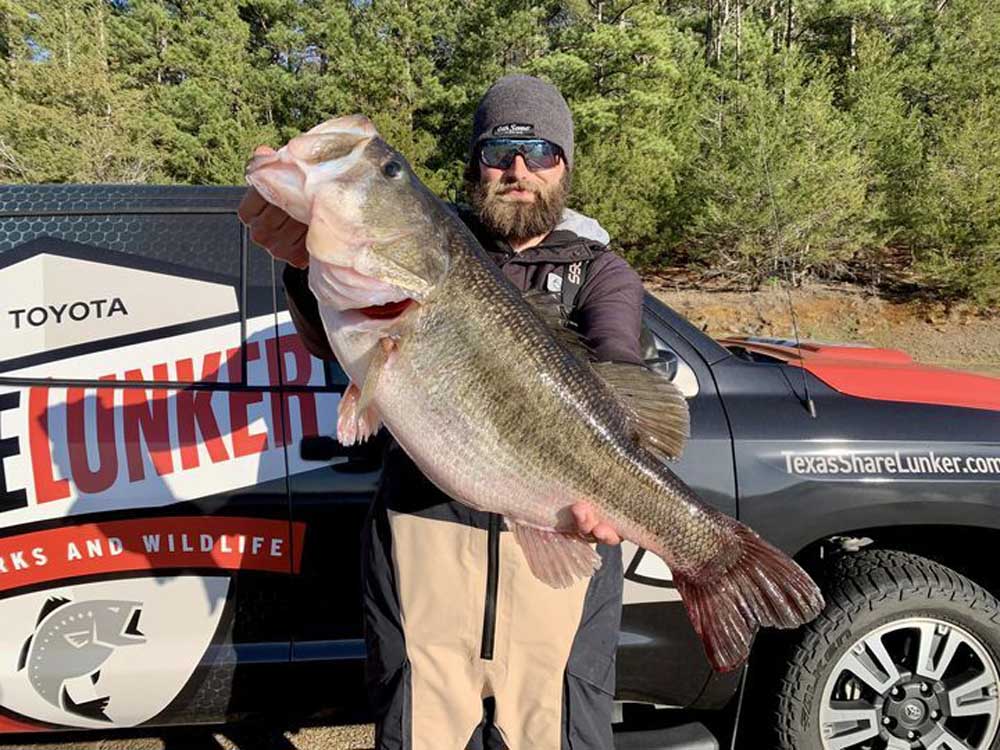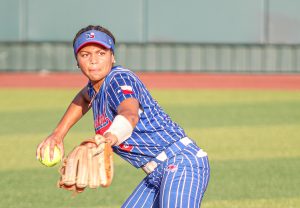Change Of Direction: Texas has seen a trophy bass fishing shift from east to west
Published 2:57 pm Friday, February 24, 2023

- East Texas’ lone Toyota ShareLunker this season has been a 13.51-pound bass caught in January by Jack York of Emory on Lake Nacogdoches.
For years the Toyota ShareLunker program was an eastern Texas thing. Sure, a few bass from around the state trickled into the program year after year, but for the most part it was lakes in East Texas, and more specifically Lake Fork, that provided the bulk of the entries.
In the last three years the program has had a western theme, driven primarily by O.H. Ivie Reservoir, but with cameos by lesser-known lakes like Eagle Mountain, Coleman City and Lake Daniel.
Trending
Between 2020 and 2022 there were just 11 ShareLunkers 13 pounds and larger taken from lakes east of the Trinity River compared to 39 from those to the west. This year there have been nine ShareLunker entries with a Lake Nacogdoches 13.51 being the only one from eastern Texas.
Twenty-five entries over those three years were from O.H. Ivie where fishermen are using a go-big-or-go-home mentality utilizing forward-facing sonar that is especially suited for the lake.
Spending the day on the move searching for one giant fish may not suit everyone, but for those solely focused on catching a double-digit bass it has paid off. In fact it was so effective at Ivie a year ago TPWD stopped collecting ShareLunkers from the lake midway through the season because it had more than enough of that genetic strain.
The drop-off in East Texas is really not a question of what is wrong as TPWD Inland Fisheries biologists throughout the region give East Texas lakes a clean bill of health for the most part.
“In my opinion there is nothing negative about East Texas,” said biologist Todd Driscoll, whose district includes Sam Rayburn and Toledo Bend. “We have had a 13-something at Nacogdoches, and we had record Toledo Bend bass caught in Bass Champs that weighed 15.67.”
Tim Bister, whose district is basically the middle portion of the region including Caddo, said there has not been any noticeable changes in recent years.
Trending
“In my district we are still managing the same way. The habitat is still good and we are still stocking Florida or now Lone Star bass to maintain trophy potential. There is one thing to consider, those (13-pound) fish are rare,” Bister said.
Bister is correct about the number of big fish, and despite the recent popularity of Ivie, lakes like Fork, Rayburn, Toledo Bend, Palestine, Lake O’the Pines, Athens and others in East Texas are more constantly beaten up by fishing pressure making those fish an even greater commodity.
Also, East Texas lakes for the most part are older and are more constant level. Those drought-related water level fluctuations out west help create more new lake effects for Ivie and others.
If there is a concern in East Texas, it would be Lake Fork, still the ShareLunker leader with 261 entries compared to Ivie’s 59. However, the numbers on the top side have dropped off in recent years.
“Specifically, Fork has been the driving factor of the ShareLunker program,” said Jake Norman, TPWD biologist for Fork. “I am not saying the lake is roached, but it is really in a downturn of year classes where those fish should be 10, 11, 12 pounds.”
Norman points out that Fork has been without a ShareLunker entry since 2019, an unprecedented time off the charts.
Norman notes the decline starts with weak year classes, but whatever the percentage of potentially big fish that would exist each year is reduced even more by fishing pressure that can result in hooking or release mortality, harvest and just more-educated fish wary of striking a lure.
“Ivie, before 2021, was off everyone’s radar so obviously some fish survived. It is not like fishing in a barrel, but Ivie is less challenging than a place like Fork. (Ivie) is so much more like trophy hunting. They are hunting one fish. They come back every day and relocate that same fish and are waiting for it to bite,” Norman said comparing the east and west fisheries.
Age could also finally be catching up to the now 43-year-old Fork. No lake has ever maintained the highest level of quality forever, but Fork has held up longer than most.
So what are the best possible East Texas options for entering a ShareLunker. According to the three biologists, just about any lake from the Red River to the Gulf Coast is capable of producing a 13. Finding one that is a sleeper is almost impossible. Driscoll said with social media, word travels fast when a hot lake materializes, but said lakes like Nacogdoches and Naconiche are good possibilities.
Bister pointed at the newest lake in East Texas, Gilmer, but warns the smaller the lake the less the carrying capacity and thus the fewer big fish that are in population. Gilmer is 1,000 acres, but its top-end fishery is aided by an 18-inch minimum length limit.
“There are so many that can produce a 13-plus,” Norman said. “There are not many I would be surprised if they did. There is not one that stands out above the others.”
However, he did note some with potential include all the Wood County lakes, and a possible sleeper in Richland-Chambers where spring tournament weights often climb into the 30s, department surveys have shown good year classes and there is adequate vegetation.







